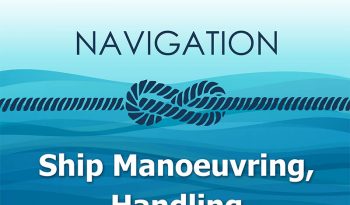Ship Manoeuvring, Handling. Test 11
Ship Manoeuvring, Handling. Test 11
If your vessel is fitted with wires on self-stowing 'split drum' winches, the advantage of having these split drum winches is:

You are underway on a power driven vessel in open water when you observe a crossing power driven vessel approximately 8 miles away at 22 degrees on your port bow. Bearing steady, what action do you take?

If you are ordering chain for use as 'Chain Stoppers' on mooring wires, the length of chain usually recommended for use in each stopper is:

You are sailing in shallow water, with 15% Under Keel Clearance. How will the stopping distance be, compared to deep water?

Your ship is operating with a right handed propeller and no thrusters. What can you do to control your ship in the situation shown?

You are duty officer on the bridge. A person is reported missing. Which of the following actions are to be considered as the correct manoeuvre in this situation?

You are duty officer on the bridge. An eye-witness is reporting man-overboard. Which of the following actions are to be considered as the correct manoeuvre in this situation?

It is important that the brake holding capacity of a self stowing winch drum should not exceed the breaking strength of the wire or rope wound onto it. A certain percentage of extra strength is therefore recommended for the wire or rope over the brake holding capacity of the winch. So, for a winch of brake holding capacity of 60 Tons you would order a wire of breaking strength:

If you are required to splice an eye on a mooring wire (using the recommended 5 full tucks and 2 half tucks) the effective breaking strength of the wire will now be affected by the splice, and you would expect:

In ship handling terms, what is meant by 'sinkage'?
Review Answers


